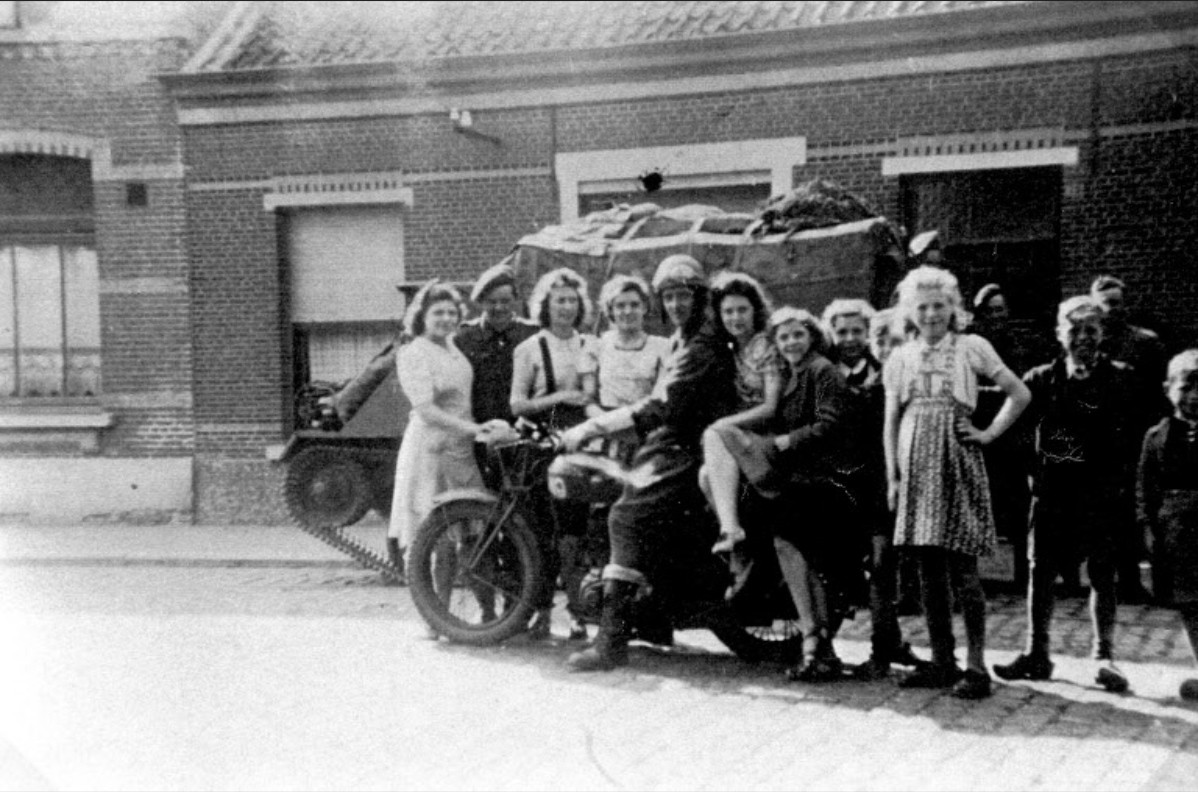Lightning-fast liberation
Lier, 5 September 1944, 9.30am. From Mortsel, four British reconnaissance vehicles approached. On the Grote Markt, residents flocked to greet them. At walking pace, the British drove through the exuberant crowd. They immediately left Lier again in the direction of Herentals. Lier was liberated! Or was it?
Not all German troops had left Lier yet. In several places retreating groups of Germans shot at residents, some of whom were already celebrating. In today's borough of Koningshooikt, the British liberators even captured a large number of German soldiers.
Not all Lieren residents experienced the liberation. As in many other Belgian towns, the Germans deported the Jewish inhabitants during the occupation with the help of the town council. Via the Dossin Barracks in Mechelen, they ended up in the extermination camps of the Third Reich. The vast majority did not survive those camps. Among them Dyszka Zolty and her children Berisch, David and newborn Mireille. A few weeks before the liberation, they were deported from Lier and gassed in Auschwitz. With the help of the population, father Jakob Lemel went into hiding in Emblem. Unfortunately, he experienced the liberation all by himself.
For residents who had collaborated with the German occupiers - or were suspected of doing so - the liberation of Lier was anything but a celebration. Immediately after the German troops left Lier, the resistance locked up 322 so-called 'blacks' in the Sion Barracks. As in Breendonk or other places in Belgium, the resistance took revenge.Prisoners were mistreated.The city council intervened.The collaboration suspects moved to an internment camp in Mechelen where they awaited trial.
The war continues
British liberators moved quickly through Lier. Not long after, new soldiers arrived. A temporary military hospital for 300 patients was set up in the Rijksnormaalschool at the end of September. As in other Antwerp towns, soldiers wounded in further fighting against the German army were cared for there. Soldiers who died were buried in the military cemetery on Mechelsesteenweg. Some 40 soldiers still rest there today.
Allied forces also installed anti-aircraft positions in Lier and Koningshooikt. Indeed, to turn the odds of war in the German favour, Hitler aimed a secret weapon at liberated Antwerp: the dreaded flying bombs. The city was a key German target for the Allies because of its strategic importance. Lier and Koningshooikt were part of a defensive belt around Antwerp that the German precursors of the rocket were supposed to intercept.
Lier and Koningshooikt were themselves victims of V-bombs.Those projectiles were not very reliable and often crashed before reaching their target. Bombs shot out of the sky also caused a lot of damage on the spot. In total, 55 V-bombs fell on Lier and 15 on Koningshooikt. This not only led to material damage, 49 people also lost their lives. Only in March 1945 did the German terror finally cease and the war violence ended.
Tourist information
Cycling routes
Tourism Province of Antwerp has created liberation routes along the cycle junction network. Cycle and walk past the places where it all happened, such as monuments, military cemeteries and crash sites. For the liberation routes, go to fietsroutes.provincieantwerpen.be
